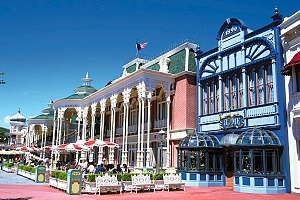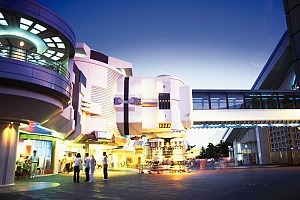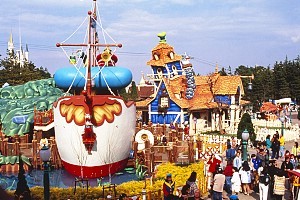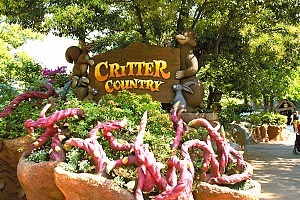Name : Rawaida Binti Ab. Razak
Matric No : A10A157
Faculty, University : Faculty of Business and Entrepreneurship, University Malaysia Kelantan (Pengkalan Chepa).
Date of Birth : 11.12.1990
Place of Birth : Machang, Kelantan.
Area of study : Degree of Business and Entrepreneurship (Tourism)
Ambition : Be a successful women ( in every field of endeavor )
Evaluation of this assignment :
Alhamdulillah...
Finally, i done my assignment...(@~@)
Through this assignment i gain a lot of information about the attractive places in this world that before this i don't know about the existing of that place.
A thousand thanks to Miss Raja Norliana Bt. Raja Omar, my lecture for this subject ( Travel & Tour Management). Your help is immeasureable.
I also take this opportunity to express a deep sense to gratitude to my freinds and my classmate for their valuable information and their constant encouragement without which this assignment would not be possible.
(@~@)
Let's getting knows how awesome this world
Saturday, March 9, 2013
BLUE MOSQUE ( SULTANAHMET CAMII), TURKEY

......the name "Blue Mosque" comes from the blue
tiles inside....
The Blue Mosque in the Old City of Istanbul is so named
because of the beautiful blue Iznik tiles decorating the interior. Officially
called the 'Sultan Ahmet Mosque' by local people, it was built by Sultan Ahmet
in 1609 and completed 7 years later...
WHAT TO SEE...
- Six minarets – one of the most notable features of the Blue Mosque is visible from far away . this is very unique as mosque have four, two, or one minarate.
- Cascade of domes - The other striking feature of the exterior is the beautifully-arranged cascade of domes that seem to spill down from the great central dome. The arcades running beneath each dome add further visual rhythm. None of the exterior is blue.
- West entrance & north entrance - The main west entrance is beautifully decorated and very much worth a look. However, to preserve the mosque's sanctity, non-worshippers are required to use the north entrance, off the Hippodrome.
- blue tiles- the high ceiling is lined with the 20,000 blue tiles that give the mosque its popular name
 |
| Side view of the Blue Mosque at dawn. |
 |
| Sweeping view of the interior |
 |
| Abeautiful tiled dome in the Blue Mosque. |
 |
| Rear (east) view of the exterior. |
- Here is the some direction for non - muslim to enter the Mosque. Plan your visit to the Sultanahmet area of Istanbul, so that you better arrive mid morning. Pray happens five times a day with the first call to prayer at sunrise and the last one at nightfall.The mosque closes for 90 minutes at each pray time.Avoid visiting a mosque at pray time (Especially Midday praying on Friday) or within a half hour after the ezan is chanted from the Mosque minarets.
- Before step in to Mosque, take off your shoes and put in plastic bags provided at the entrance(Free of Charge). This is required of all persons as part of Muslim tradition when entering a mosque. There is also no charge to enter the Blue Mosque.
- If you are women wear a head covering when entering to Blue Mosque.Head coverings are available at the Blue Mosque entrance for free. Place the fabric cover on top of your head with equal portions hanging on both sides. Take one side and wrap it around your neck, tossing it behind your back with covering your shoulders. Don't cover your face, the covering is meant to hide your hair only.
- When you are inside the mosque, remain quiet and don't use flash photography.Since this is a place of worship, avoid staring or taking picture of those who are praying.Visit the mosque respectfully and quietly.At the Mosque exit, you can put used plastic bags in designated bin bags and return head covers to duty staff.
- You can do donation to help maintain the Mosque at the exit door.It is not compulsory, but if you make donation you will get the official receipt for it.

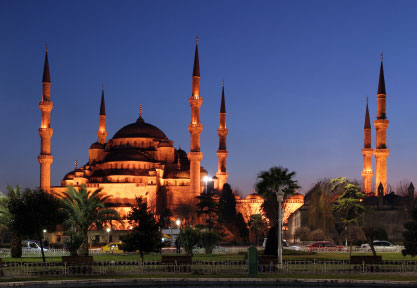
FESTIVALS & EVENTS
- On summer evenings at 9pm, there is a historical narrative and a light show at the Blue Mosque. The commentaries are given in Turkish, English, French and German on various evenings.
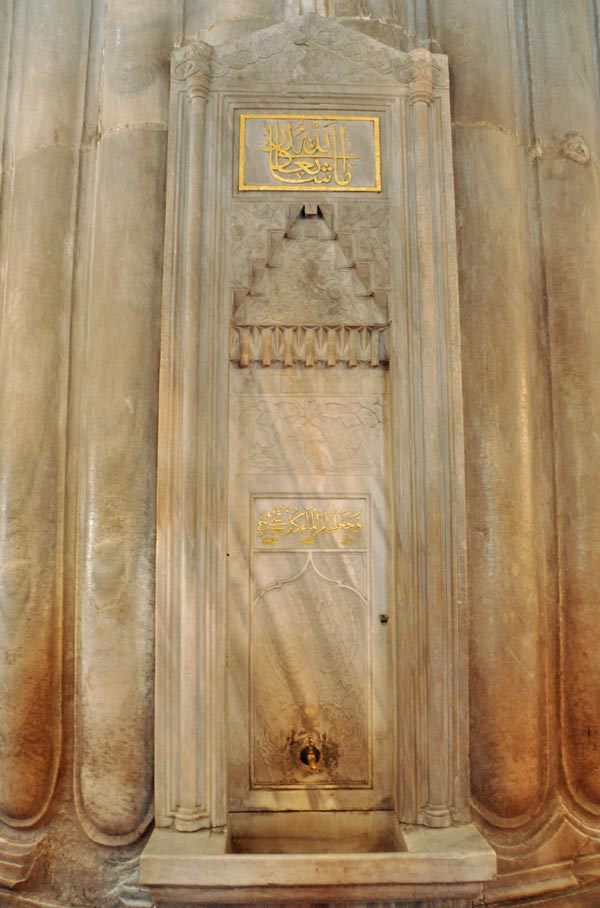 |
| Fountain in the Blue Mosque |
Friday, March 8, 2013
The Edo- Tokyo Museum
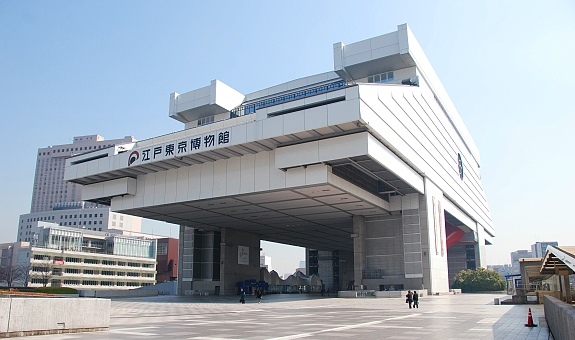
The
Edo-Tokyo Museum (江戸東京博物館, Edo Tōkyō Hakubutsukan) is housed in an unique
looking building located in the Ryogoku district.
The museum's permanent exhibition vividly illustrates the past of Tokyo (formerly
Edo) through its exhibits and covers many features of the capital from the Edo Period to
relatively recent decades.
In an interactive way, visitors are able to experience and learn about various
aspects of earlier Tokyo such as the way of life of people,Edo Period architecture,
cultural heritage, political climate, commercial situation and more. Through
numerous models of towns, figurines and life-sized figures, the museum makes
it interesting to find out about how towns were constructed in the past.
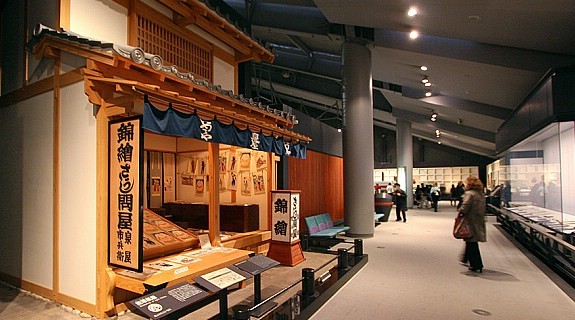
The museum also offers :
- many good picture taking opportunities (eg: with vehicles and items which were previously used.)
- voluntary guides speaking in English and other language are available from 10.00 - 15.00.
- there is theatre in the museum, at which performances are held on weekends.
- special exhibitions are held periodically on varying, Tokyo related themes.
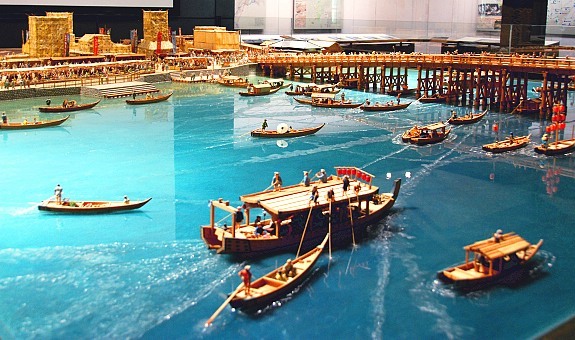 |
| Model with vividly illustrates the past |
- Hours: 9.30 to 17.30 (until 19.30 on Saturdays). Admission ends 30 minutes before closing
- Closed : Monday (or following day if Monday is a public holiday ), New Year Holiday
- Admission : 600 yen ( separate, varying fees apply for special exhibition.
- English : Moderate
- The open air museum is located in the western part of Koganei Park City, 25 minutes west of Tokyo's Shinjuku Station by train. From the Shinjuku, take either the Seibu Shinjuku Line to Hana - Koganei Station (260 yen) or JR Chuo Line to Musashi - Koganei Station (290 yen). From either station, the park is a 5-10 minute bus ride or 15-30 minute walk.
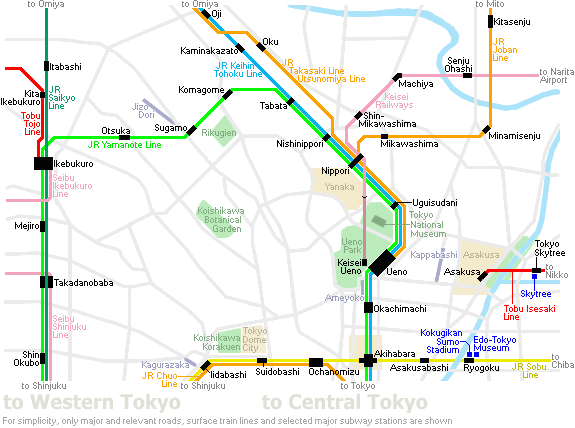 |
| ORIENTATION IN TOKYO |
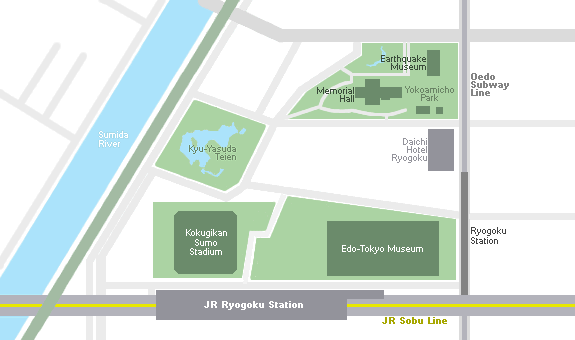
TOKYO DISNEYLAND, JAPAN
Tokyo Disneyland is a theme park based on the films produced by Walt Disney. It was opened in 1983 as the first Disney theme park outside of the United States. Modeled after Disneyland in California and the Magic Kingdom in Florida, Tokyo Disneyland is made up of seven themed lands and features seasonal decorations and parades.
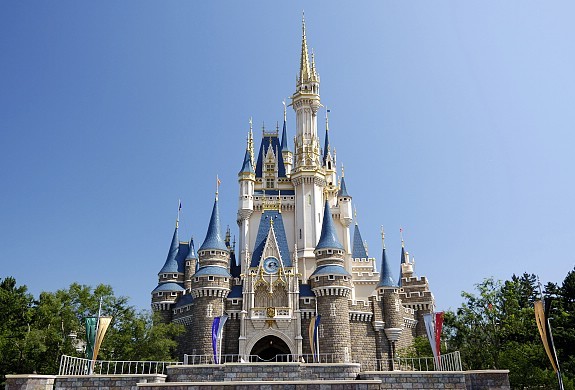
There are 7 themed areas at Tokyo Disneyland.
1) World Bazaar
|
World Bazaar, located at the main entrance to the park, is
a covered shopping arcade lined by shops and restaurants. The area is
designed like an early 20th century American town and serves as the park's
main shopping area where many guests stop on their way out of the park.
|
2) Tomorrowland
|
Tomorrowland explores the themes of outer space and future
technologies. It is home to popular attractions such as Space Mountain, Star
Tours and Buzz Lightyear's AstroBlasters.
|
3) Toontown
|
Toontown is a suburban toon neighborhood where the Disney
characters live, work and play. Aimed at a younger audience, Toontown lets
visitors meet Mickey at his house, play on Donald Duck's boat, check out
Chip'n Dale's Treehouse and ride a kid sized rollercoaster.
|
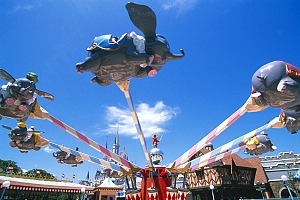
4) Fantasyland
|
Fantasyland is based on the classic animated films by
Disney and is home to the iconic Cinderella's Castle at the center of the
park, as well as other characters and rides such as Peter Pan, Snow White,
It's A Small World and Pooh's Hunny Hunt, an original Fantasyland attraction
unique to Tokyo Disneyland.
|
5) Critter Country
|
Critter Country is home to Br'er Rabbit, Br'er Fox, Br'er
Bear and the other characters from the Disney film "Song of the
South". Here you can find the popular Splash Mountain log ride, as well
as guided canoe tours on the Rivers of America.
|
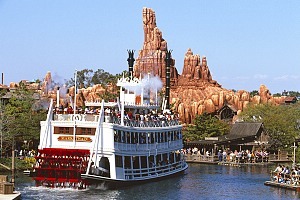
6) Westernland
|
Westernland is themed after the US western frontier along
the Rivers of America. The area is home to the popular rollercoaster Big
Thunder Mountain, while Tom Sawyer Island is located out in the middle of the
river.
|
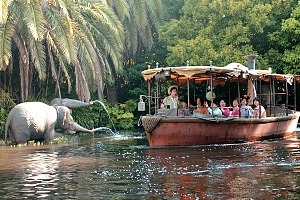
7) Adventureland
Adventureland includes attractions that encompass the spirit
of adventure. Here you can join a jungle cruise, explore the Swiss Family
Treehouse, ride the Western River Railroad and sail with the Pirates of the
Caribbean.
ADDITIONAL INFORMATION:
|
HOW TO GET THERE
- Tokyo Disneyland is a five minute walk from JR Maihama Station. It can also be reached in a few steps from the TokyoDisneyland Station along the Disney Resort Monorail.
How to get to and around Tokyo Disney Resort
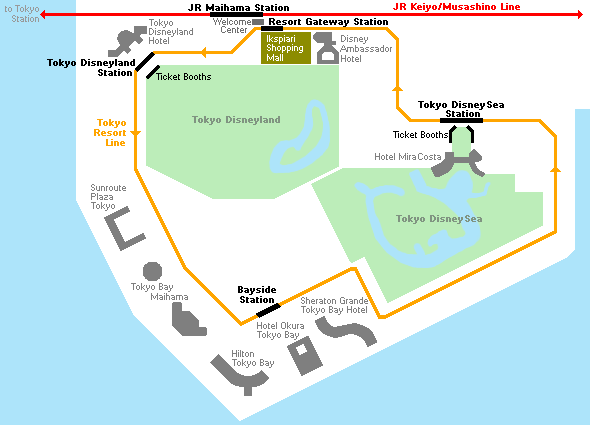
Thursday, March 7, 2013
Chocolate Hills of Bohol, Philippines
INFO:
The Chocolate Hills are an unusual geological formation found in Bohol, in the Central Visayas region of the Philippines. It is found that there are 1,776 hills spread on an approximate 50 square kilometer area. Depending on the season, the Chocolate Hills change in color, varying from green to chocolate brown.
The Chocolate hills are the most famous tourist attraction in Bohol. The Chocolate hills were featured in the Philippine Tourism Authority’s list of Philippine tourist destinations and are the Philippines’ third National Geological Monument. Proposals to include the Chocolate hills in the UNESCO World Heritage Site list are currently being conducted.
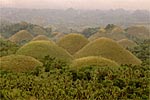 |
| View such pregnant woman |
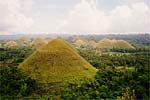 |
| Chocolate Hills |
The Chocolate Hills look like women’s dress, or giant mole hills, or something out of a child’s drawing. The unusual thing about it is that it is a natural phenomena! Geologists believe that the hills were formed from marine limestone on top of a clay layer. The Chocolate hills are uniform in shape, some standing from 30 to 50 meters high. They are usually covered with grass the year around, but turn brown during the dry season, thus the name. You can see the magnificent view by climbing 214 steps to an observation outpost above the hills.
 |
| Picking up a chocolatedrop at the wonderful Chocolate Hills in Bohol |
 |
| View of the Chocolate Hills |
- Essentials to bring – Bottled water, a camera
HOW TO GET THERE
- From Tagbilaran, go the integrated bus terminal in Dao and catch a bus going to Carmen. At the entrance of the bus terminal people will point you to the right bus. Make sure it is the first one to leave, and ask the driver to drop you off at the Chocolate Hills complex, about 4 kilometers before the town of Carmen. From there it is a 10 minute walk along a road winding up to the complex.
- To get back to Tagbilaran, you will have to walk back to the main road, and wait for a bus to pass by. The last bus from Carmen to Tagbilaran leaves at four P.M. Alternatively, you can use the services of the motorcyclists who often wait here for tourist, and ride 'habal-habal,' or motorbike taxi.
- If you're coming from Tubigon (arriving from Cebu by boat), a few buses go to Carmen daily, but sometimes you'll have to wait for some time for the bus to fill up. When you arrive in Carmen, you can catch the next bus or jeepney in the direction of Bilar, Loay or Tagbilaran, or ask a 'habal-habal' driver to bring you to the Chocolate Hills Complex.
...........(@~@)..........
Kampong Ayer, Brunei

Kampong Ayer Stretching for several miles along the banks of the Brunei River, Kampong Ayer, Brunei's famed water village, is a fascinating glimpse into Brunei's past. Built entirely of stilt houses and wooden walkways, this cluster of 42 villages housing more than 30,000 inhabitants is the world's largest water village. Some people refer to it as the 'Venice of the East'.
 |
| many traditional boats are provided for the tourists that come here |
Kampong Ayer retains much of the historical features of the 16th century when Ferdinand Magellan's chronicler first discovered it. The traditional lifestyle of its inhabitants-fishermen, river traders and artisans making and selling traditional handicrafts (silverware, brassware, woodcarving and cloth weaving) - has remained unchanged since then. Today Kampong Ayer is an almost self-sufficient community being equipped with modern facilities such as schools, shops, markets, mosques, clinics, police stations and fire brigades. All are connected by a maze of stilted platforms and walkways.
Kampong Ayer is a national heritage and efforts are being made to preserve this lifestyle so that the legacy of the 'water' people of Brunei will be retained, not only as a tourist attraction, but also for the future generation of Brunei. Visitors can have a personal experience of this heritage by taking one of the many water taxis that ply daily between the water taxi jetty in front of the Yayasan Sultan Haji Hassanal Bolkiah in the centre of town and the water village itself.
 |
| there are some buildings around the Kampong Ayer |
 |
| there is types of designed homeon the water....Malay tradisional house....at the back is a golden domed mosque |
 |
| Look around this river .. full of houses on the water. a rare sight that we can see in other places. |
 |
| Bandar Seri Begawan fringe views |
Getting There & Around
- Look to fly towards Bandar Seri Begawan by using the Brunei International Airport. Located a short distance north of town, the airport receives flights from a number of Asian origins.
Average Costs
- Mid-range accommodations: $70-110
- Meal: $9-20
- Beer: $4
Do’s
- Look to get around to surrounding communities by boat.
- Save money by opting for the city’s decent public transportation.
- Dress conservatively while walking around Bandar Seri Begawan.
Dont's
- Be surprised to see boat operators trying to up the price on your trip.
- Turn down food if you are invited into someone’s house.
- Expect to find alcohol in Brunei. You are however, allowed to bring it in and drink it in private.
Fun Facts
Kampong Ayer is recognized as a collection of villages rather than one single entity.
While Kampong Ayer’s older houses are built on wooden stilts, the new ones are constructed with concrete.
Brunei’s government provides free health care for its citizens.
that's all about Kampun Ayer ....(@~@)
Livingstone, Montana

.......Located along the Yellowstone River and surrounded by three mountain ranges, Livingston Montana is a small town with big city amenities........
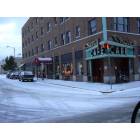
Nestled beneath three mountain ranges, the Crazys, Absarokas and Bridgers, Livingston is located in its own picturesque valley. Downtown is lined with art galleries, unique shops, and a variety of restaurants. Just 55 miles north of Yellowstone's North Entrance, it is a primary gateway community for visiting the park
Where is Livingston Montana?
Livingston is located north of Gardiner and Yellowstone's North Entrance by about 55 miles, sitting at the northern end of Paradise Valley. It is 28 miles east of Bozeman. The closest airport is located at Gallatin Field in Bozeman.
What sort of amenities and services are available in Livingston?
You'll find pretty much any big city amenity in Livingston. And if you can't find it in Livingston, you'll find it in nearby Bozeman Montana. There are a number of places to stay, including hotels and motels. A variety of restaurants are mostly located right in downtown Livingston and a bunch of shops offer great souvenirs and unique gifts.
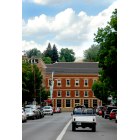 What can I see and do in Livingston?
What can I see and do in Livingston?Yellowstone River: The section of the Yellowstone that flows between Gardiner and Livingston is famous for fly fishing, either from a drift boat or from the banks.
Chico Hot Springs: Just south of Livingston in the heart of Paradise Valley, Chico Hot Springs is a historic hotel built around a large developed pool. You can stay the night or just purchase a day pass. Don't miss a meal in their popular restaurant or live music at the saloon.
Depot Center: Stop by the Livingston Depot Center for a complete history of the area and an extensive exhibit on the history of the Northern Pacific Railroad.
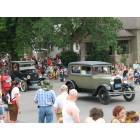 Hiking: Surrounded by three mountain ranges, hiking trails are endless. Head to Pine Creek Falls (1 mile south of Pine Creek on East River Road) for a shorter hike or try a full day hike to Passage Falls (34 miles south of town, head east on Mill Creek Rd and then 13 miles out East River Road).
Hiking: Surrounded by three mountain ranges, hiking trails are endless. Head to Pine Creek Falls (1 mile south of Pine Creek on East River Road) for a shorter hike or try a full day hike to Passage Falls (34 miles south of town, head east on Mill Creek Rd and then 13 miles out East River Road).Entertainment: Two theatrical groups, the Center for the Arts and the Blue Slipper Theatre, provide quite a bit of entertainment for locals and visitors.
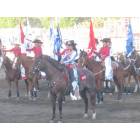
THE END...(@~@)
Subscribe to:
Comments (Atom)

